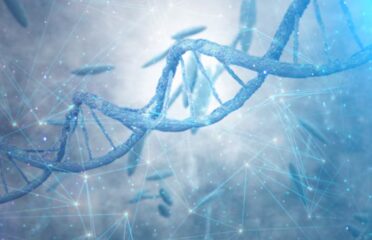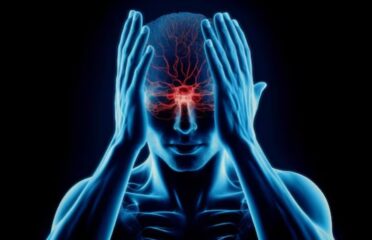Ataxia Telangiectasia
Overview

Ataxia Telangiectasia (AT), called Louis-Bar syndrome, is a rare childhood neurological disorder characterized by difficulty controlling muscles and speech.
Additionally, it can impact the spine and immune system, often manifesting before age 5. The disorder stems from mutations in the ATM (ataxia-telangiectasis mutated) gene.
Regrettably, individuals with AT face an increased risk of developing certain cancers, such as acute lymphocytic leukemia or lymphoma.
Despite its rarity, AT poses significant challenges to affected individuals, necessitating comprehensive medical care and support to effectively manage its symptoms and associated risks.
Timely diagnosis and early intervention are crucial in providing appropriate care and enhancing outcomes for individuals affected by this intricate disorder.
Symptoms
Neurological symptoms may include:
• Unsteady walking and lack of balance.
• Lack of coordination of movement.
• Slurred speech.
• Difficulty swallowing.
• Unintentional movements, such as tremors or jerky movements.
• Difficulty coordinating eye movement
Causes & Risks
• Ataxia-telangiectasia (A-T) results from a mutation in the ATM gene, responsible for repairing damaged DNA.
• The human body possesses 46 chromosomes grouped into 23 pairs, with genes serving as chapters in the DNA instruction manual.
• A-T is a genetic disorder inherited when both parents transmit the mutated gene to their child.
• The ATM gene produces proteins crucial for DNA repair and maintaining the nervous and immune systems.
• Mutations in the ATM gene can impair protein function, affecting cellular processes over time.
• This dysfunction can lead to ataxia-telangiectasia symptoms, characterized by difficulties in coordination and the appearance of small, red spider veins.
Test & Diagnosis
To diagnose ataxia-telangiectasia, a healthcare provider will first conduct a physical examination to observe symptoms. Following this, they will use imaging and blood tests to confirm the genetic mutation that is causing the symptoms.
Here are the tests that are used to diagnose ataxia-telangiectasia:
• Genetic testing: This is a blood test that detects the exact gene mutation responsible for causing the symptoms.
• Magnetic resonance imaging (MRI): It takes images of the brain to detect weakened neurons or cerebellar cells, which are a sign of progressive ataxia.
• Karyotyping: This is a blood test that examines chromosomes for genetic conditions.
• Blood tests: These tests look for increased levels of alpha-fetoprotein.
It is recommended that people who are suspected of having A-T should visit an immunologist for a complete workup and evaluation.
Treatment
• Ataxia-telangiectasia is incurable, but treatments aim to manage symptoms.
• Treatment approaches vary and may include avoiding excessive sunlight exposure to manage dilated blood vessels.
• Chemotherapy may be administered to combat cancer associated with the condition.
• Physical therapy can help strengthen muscles and improve mobility.
• Gammaglobulin injections may be given to treat respiratory infections.
• Additional therapies include immunoglobulin therapy for immune system support, antibiotics for infection treatment, and diazepam to alleviate slurred speech and involuntary muscle movements.
Living With
If your child has been diagnosed with ataxia-telangiectasia, it can be difficult to fully understand their condition and how to best support them.
However, your child's healthcare provider will suggest a treatment plan that is tailored to their symptoms and they will be available to answer any questions you might have.
It is also recommended that you speak with a genetic counselor who specializes in genetics and can provide you with more information about ataxia-telangiectasia.
The counselor can offer advice on ways to help your child live a comfortable and fulfilling life, as well as provide emotional support as you navigate your child's diagnosis.
Complications
• Ataxia-telangiectasia (A-T) is a rare genetic disorder affecting multiple body systems.
• It primarily impacts the nervous and immune systems, causing progressive movement difficulties, coordination issues, and balance problems (ataxia).
• Individuals with A-T often develop small red or purple dilated blood vessels (telangiectasia) on the skin and eyes, leading to nosebleeds, skin lesions, and eye problems.
• The weakened immune system in A-T patients increases susceptibility to infections, especially respiratory infections, which can result in breathing difficulties and lung disease.
• Additionally, A-T raises the risk of certain cancers like leukemia and lymphoma.
• Management involves supportive care and interventions tailored to specific complications. However, A-T typically shortens life expectancy due to its diverse health impacts.

The Content is not intended to be a substitute for professional medical advice, diagnosis, or treatment. Always seek the advice of your physician or other qualified health provider with any questions you may have regarding a medical condition.
Know more about
Our Healthcare Planner
Personal Health Planner at BNC is a support staff who listens to your concerns and connects you with a Neuro Care provider. They prioritize your needs and create a trusting relationship between you and the provider.
Three fundamental values we can assure you:
1. Personalized Healthcare.
2. Most advanced robotic therapies
3. Transparent pricing





